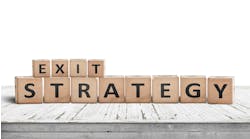In today's world, maximizing the use of business cash and bottom line management is more important than measuring top line activity.
The reason is simple: margins have been dropping across the entire industry. If jobbers do not start focusing on the bottom line, store doors will close for good.
Jobbers must pay attention to inventory levels and turnover frequency. It still amazes me, however, that many jobbers will keep items in their stores because they bought the material at a low cost and think they will sell it at a premium price. It also amazes me that some jobbers are consumed with building the total dollar value of their inventory without regard to how the inventory is moving within the business. In these competitive times, how can jobbers justify such old school thinking?
Most jobbers will agree that inventory turnover can be a key measurement to determining a store's success or failure. Stocking the right inventory based on shop customers has become critical for maximizing the use of cash within the business. Technology exists today to provide management with real-time, key measuring data that management can use to help maximize the store's inventory investment and build a stronger bottom line.
Jobbers should consider constant measurement of the Inventory Turn-Earn Index (TEI), a measurement that combines gross margin with turnover. If a jobber enjoys high profit margins, then he or she can be very successful with a low inventory turnover value. On the other hand, if a jobber has very low profit margins, it is critical that he has a very high rate of inventory turnover. Keeping a handle on the right balance, however, gets complicated in the real world.
Jobbers carry many lines of products with a wide range of margins, all of which call for the consumption of cash. It is therefore critical that products be measured to prove they are providing a reasonable return on investment and that the jobber is carrying the right products for the store's customer base. The TEI accomplishes this.
The TEI is calculated by multiplying the inventory turnover by the gross margin percentage:
TEI = Turnover x Gross Margin
Successful jobbers strive for an overall TEI of 140, but preferably closer to 150. With that in mind, consider the following three examples.
If a jobber has an average gross margin of 30 percent on a particular line and succeeds with five inventory turns of that line, then the store has accomplished a TEI of 150.
5 Turns x 30 percent Gross Margin = 150 TEI
If a jobber has an average gross margin on a particular line of 15 percent and achieves an inventory turn with that line of 10 times, then he or she also has achieved a TEI of 150.
10 Turns x 15 percent Gross Margin = 150 TEI
But if the jobber had a high margin of 50 percent, then the store would only require three inventory turns to achieve the same TEI.
3 Turns x 50 percent Gross Margin = 150 TEI
By using such a benchmark measurement as a standard, a jobber can determine what product lines should be carried. The measurement standard also ensures that the jobber is not tying up important cash on items that do not contribute to the store's bottom line.
Stocking levels for the jobber store now can be defined. For example, if a jobber was achieving only a TEI of 90 with a product line earning a margin of 30 percent, the math proves to the jobber that the line is turning only three times and that:
- the line item may not be the type preferred by shop management for the vehicles they service;
- the shops are not properly informed about fit, form and function of the product line, as the jobber has not educated or marketed the product line properly to the customer base; or
- there is too much of the product line in the jobber inventory, consuming jobber cash.
This is not to say that everything is black and white with inventory management or with this measuring method. However, the odds are good that this measurement tool, combined with common sense, can help a store achieve a consistent 20 percent return on investment (ROI) year over year.
As the jobber's business continues its metamorphosis, simple measurement tools can be a great time-saver as well as a great bottom line builder. So, take the time to measure your store's TEI. It will become a tool that you enjoy using, as it tells you so much about the activity that is being generated by the business and where your resources are being put to the best use.
Bob Greenwood is president and CEO of the Automotive Aftermarket E-Learning Centre Ltd. (www.aaec.ca), a technology company based in Ottawa, Ontario. He has more than 30 years of business management experience in the aftermarket. He can be reached at [email protected].




